Signs you re going to have a miscarriage
Warning signs, treatments, and prevention
A miscarriage is defined as the spontaneous loss of a fetus before it is viable, which in the United States is the 20th week of pregnancy. The medical term for miscarriage is “spontaneous abortion.”
Miscarriage is one of the most common complications associated with early pregnancy. Sadly, around one-quarter of all pregnancies result in miscarriage.
Most miscarriages occur during the first few months of pregnancy. An estimated 85 percent of miscarriages happen before week 12. A woman may have a miscarriage before she knows she is pregnant.
Although miscarriage is relatively common, it can be an extremely traumatic and devastating experience.
The main sign of miscarriage is vaginal spotting or bleeding, which can vary from slight brownish discharge to very heavy bleeding.
Other symptoms include:
- cramping and pain in the abdomen
- mild to severe back pain
- weight loss
- fluid discharge from the vagina
- tissue or clotted discharge from the vagina
- feeling faint or light-headed
- contractions
If you are pregnant and experience any of these symptoms, contact your doctor, midwife, or antenatal clinic immediately.
Ectopic pregnancy and miscarriage
An ectopic pregnancy is when the fertilized egg settles and grows outside the inner lining of the uterus, instead of inside.
Around 1–2 percent of all pregnancies are ectopic. If left untreated, they can be fatal because of internal bleeding, and the risk of losing the baby is increased.
Symptoms of an ectopic pregnancy are:
Shoulder tip pain – where the shoulder ends and the arm begins; this is more evident when the woman is lying down; also:
- severe abdominal pain
- feeling light-headed
- dizziness
There are a variety of terms that doctors use when discussing miscarriage, these include:
Threatened miscarriage: Some bleeding in early pregnancy with lower backache. Cervix stays closed. In this case, the pregnancy continues.
Inevitable or incomplete miscarriage: Abdominal or back pain, bleeding, and an open cervix. If the cervix is open, the miscarriage is considered inevitable.
Complete miscarriage: The embryo empties out of the uterus. Bleeding and pain subside quickly.
Missed miscarriage: The embryo has died, but there are no other symptoms, such as bleeding or pain.
Recurrent miscarriage: This is defined as three or more miscarriages during the first trimester.
The aim of treatment following or during a miscarriage is to prevent hemorrhaging (bleeding) and infection. Normally, the body expels the fetal tissue on its own, especially earlier in the pregnancy. However, if it does not, a doctor may perform a dilation and curettage (D and C).
During a D and C, a doctor opens the cervix and inserts a thin instrument into the uterus to remove tissue. After the procedure, drugs may be prescribed to control bleeding.
Miscarriage can happen for a range of reasons.
Placental problems: If the placenta develops abnormally, blood supply from the mother to the baby is interrupted.
Chromosome problems: Sometimes, a fetus can receive the wrong number of chromosomes, causing abnormal development of the fetus. Miscarriages that occur during the first trimester are mainly related to chromosomal abnormalities in the baby.
Womb structure abnormalities: Abnormally shaped wombs and the development of fibroids (non-cancerous growths) in the womb can put a developing fetus at risk.
Polycystic ovary syndrome (PCOS): This occurs when the ovaries are too big, causing a hormonal imbalance.
Weakened cervix: The cervix is the neck of the womb. When the muscles of the cervix are weak, they can open up too early during pregnancy, resulting in miscarriage.
Lifestyle factors: Habits such as smoking, drinking alcohol, or using illegal drugs can lead to miscarriage.
Underlying health conditions
Share on PinterestPre-existing kidney conditions can increase the risk of miscarriage.
Underlying health conditions among pregnant woman that are associated with miscarriage include:
- high blood pressure
- coeliac disease
- diabetes
- kidney disease
- lupus
- thyroid gland problems
- HIV
- malaria
- rubella
- chlamydia
- syphilis
- gonorrhea
Being overweight or underweight
Obesity is known to increase the risk of first and subsequent miscarriages.
Women with a low body mass index before they become pregnant are also at a heightened risk of miscarriage. Research published in the International Journal of Obstetrics and Gynaecology reported that underweight women were 72 percent more likely to suffer a miscarriage during their first 3 months of pregnancy, compared with women whose weight was healthy.
Be aware of current medications
It is crucial to check with a doctor which medications are safe to take during pregnancy. Medicines that should be avoided (if possible) while pregnant include:
- retinoids
- non-steroidal anti-inflammatory drugs (NSAIDs)
- methotrexate
- misoprostol
- antidepressants
Limit caffeine
A meta-analysis published in the European Journal of Epidemiology combined data from 60 studies and concluded:
“Greater caffeine intake is associated with an increase in spontaneous abortion, stillbirth, low birth weight, and SGA, but not preterm delivery.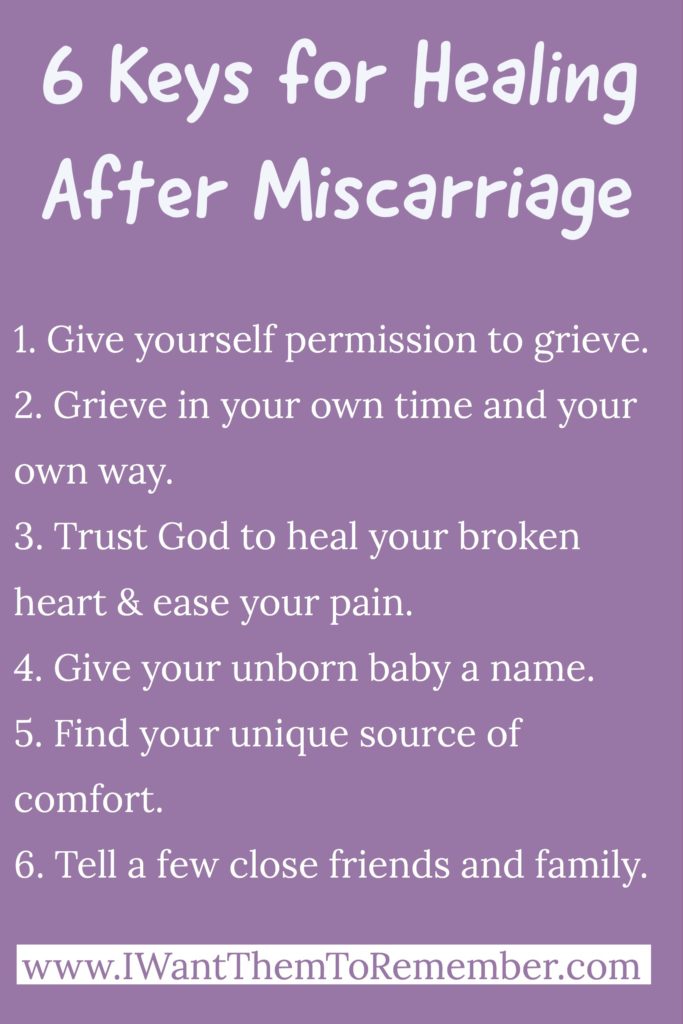 ”
”
The World Health Organization (WHO) advises that women who consume more than 300 milligrams (mg) of caffeine per day should reduce their intake.
Miscarriage myths
There are many misconceptions regarding miscarriage. Many people believe that having sex and/or exercising can result in miscarriage, but there is no evidence to suggest this. However, some types of exercise would not be suitable for a woman who is 8 months pregnant. If you are pregnant, ask your doctor which exercises are appropriate.
In many cases, a miscarriage has no apparent cause.
The tests used to diagnose miscarriage are:
Ultrasound scans: Transvaginal ultrasounds involve placing a small probe into the vagina to check for the heartbeat of the fetus. Some women may choose to undergo an external abdominal ultrasound instead to avoid discomfort.
Blood tests: These are useful because they can determine if levels of beta-human chorionic gonadotropin (hCG) and progesterone are normal – both of these hormones are associated with a healthy pregnancy.
Pelvic exams: These determine whether the cervix has thinned out or opened.
A few simple lifestyle changes can reduce the risk of miscarriage:
- Avoid smoking, drinking alcohol, and using illicit drugs during pregnancy.
- Eat a healthful diet.
- Maintain a healthy weight before and during pregnancy.
- Be careful to avoid certain infections, such as German measles (rubella).
Read the article in Spanish.
What does a miscarriage look like? Symptoms and seeking help
Miscarriage, or pregnancy loss, can look and feel different for each person. Common symptoms include bleeding and cramping.
It is important to note that bleeding is common during pregnancy — especially in early pregnancy. It does not necessarily mean that anything is wrong.
The only way to accurately identify a pregnancy loss is to test pregnancy hormone levels and have an ultrasound of the uterus.
Read on to learn more about what pregnancy loss can look and feel like.
According to a 2016 study, not all pregnancy losses involve bleeding. Overall, they do not follow a single pattern. This is why it is crucial to seek medical care for bleeding and any unusual symptoms during pregnancy.
Pregnancy loss during the first trimester may involve:
- heavy bleeding
- bleeding that starts light and gets heavier
- passing blood clots or tissue
- cramping, which may come in waves
- a gush of fluid from the vagina
If a person takes a pregnancy test after experiencing a pregnancy loss during the first trimester, the result may be negative, or the test may have a positive line that gets fainter.
Experiencing pregnancy loss later in the first trimester and beyond will involve passing more tissue.
Second-trimester pregnancy loss can also cause intense cramping and sometimes even contractions.
In addition to bleeding and cramping, some people may notice larger blood clots.
According to a 2019 meta-analysis, one-quarter of pregnant women experience bleeding during the first trimester. Another study from 2016 puts that percentage higher, at closer to 20–40%.
Another study from 2016 puts that percentage higher, at closer to 20–40%.
A large-scale 2010 study found that about 12% of pregnant women experienced pregnancy loss, and about two-thirds of that group reported bleeding during their pregnancy.
Some differences between bleeding due to a pregnancy loss and other types of bleeding during pregnancy include:
- Amount of blood: Heavy bleeding is more likely to signal a pregnancy loss.
- Bleeding pattern: Bleeding that gets progressively heavier may indicate a pregnancy loss.
- Pain: Cramping, especially when it occurs in a clear pattern, is more likely to signal a pregnancy loss.
- Passing tissue: Some — not all — people who experience a pregnancy loss pass large blood clots or tissue.
For people who do experience bleeding during a pregnancy loss, the duration tends to depend on how far the pregnancy has progressed.
Pregnancy losses that occur in the first weeks of pregnancy tend to cause bleeding that lasts a few days. Those that occur later may cause bleeding that lasts for as long as 4 weeks.
Those that occur later may cause bleeding that lasts for as long as 4 weeks.
Sometimes, the bleeding stops and starts again. Over time, it should get lighter.
A very early pregnancy loss is sometimes called a chemical pregnancy. These pregnancies are lost shortly after the embryo implants, usually within a few days or weeks.
A chemical pregnancy may be detectable by a pregnancy test, but it would likely not be seen on an ultrasound.
In many cases, early pregnancy losses can happen before a person knows they are pregnant.
In fact, around 80% of early pregnancy losses occur in the first trimester, or in weeks 0–13. The end of these early pregnancies may be mistaken for a period because the symptoms are similar.
For example, both a period and an early pregnancy loss can involve bleeding and cramping. Pregnancy tissue that passes out of the vagina may look like typical blood clots that occur during a period.
It is possible that a person will not realize they have missed a period. Instead, they may mistake the symptoms of a pregnancy loss for those of a menstrual period.
Instead, they may mistake the symptoms of a pregnancy loss for those of a menstrual period.
Pregnancy losses and periods can both cause:
- vaginal bleeding
- passing blood clots or tissue
- abdominal pain
However, a pregnancy loss will often cause additional symptoms that set it apart from a period, especially if the pregnancy loss occurs several weeks into the pregnancy. These symptoms include:
- larger clots or pregnancy loss tissue
- more clots than typical periods
- lower abdominal cramping
- back pain
- passing a significant amount of clear or pinkish fluid
- sudden heavy bleeding, or heavier bleeding than a typical period
- longer bleeding
- sudden easing of some early pregnancy symptoms, such as nausea and breast tenderness
It is important to remember that bleeding during the first weeks of a pregnancy is not uncommon, and it is not always a sign of pregnancy loss or a problem with a pregnancy.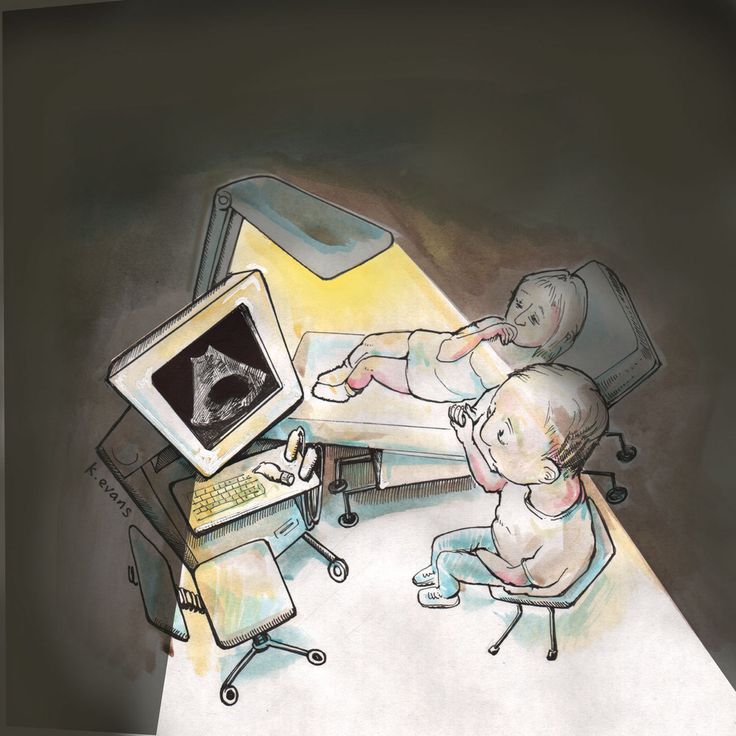
However, if a person experiences other symptoms of pregnancy loss, they should seek care from a doctor.
A “missed miscarriage” refers to a delay between the loss of the pregnancy and any bleeding or passing of tissue.
During a missed miscarriage, an embryo dies but does not leave the uterus for several weeks. In fact, a pregnant person may not realize the pregnancy has ended until an ultrasound finds no heartbeat.
When the embryo does leave the uterus, the blood, tissue, and clots may be dark brown. The tissue has had time to deteriorate, so bright red blood or heavy bleeding may not occur. The bleeding may last several days to several weeks.
A doctor may prescribe medication to help the person who has had the pregnancy loss bleed and pass the tissue. Surgery may also be necessary.
It is not possible for healthcare professionals to stop a pregnancy loss once it starts.
Call a doctor and schedule an appointment within 24 hours if any of the following occur:
- vaginal bleeding
- a fever
- intense pain or cramping
- bleeding that stops and starts again
- any other changes in the pattern of bleeding, even if a doctor has already addressed the cause
- bleeding that lasts for longer than 7 days, even if a doctor has already confirmed pregnancy loss
Pregnant people should receive emergency medical attention if they:
- experience heavy bleeding during the second trimester and cannot reach their doctor
- bleed heavily enough to soak through more than one pad per hour for more than 2 hours
- feel faint, lightheaded, or confused
- experience contractions, amniotic fluid leakage, the water breaking, or other signs of premature labor
Most pregnancy losses pass on their own.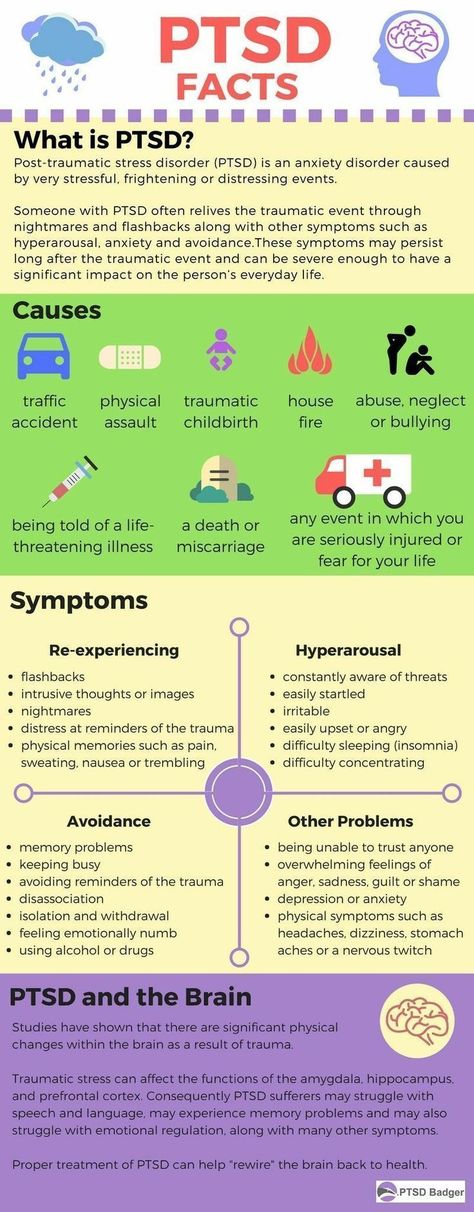
In some cases, the fetus dies without causing any bleeding. When this happens, the person carrying the fetus may want to wait for the pregnancy to pass on its own or want it to be over as quickly as possible.
If a person wants to expedite a pregnancy loss, a doctor can supply medication that helps with passing the pregnancy at home. This approach is safest during early pregnancy.
A healthcare professional can also perform surgery to remove the remains of the embryo or fetus.
Sometimes a pregnancy loss is incomplete, leaving behind tissue that can lead to infection or other health problems. When this happens, a doctor may recommend medication or surgery.
Doctors used to advise couples to wait 1 month, or sometimes much longer, before trying to conceive again after a pregnancy loss.
However, research now shows that there is no medical justification for this recommendation. If a couple feels ready, it is safe to begin trying to conceive again right away.
A 2017 study indicates that fertility may even be slightly higher immediately following a pregnancy loss.
Sometimes, however, it takes a while for a menstruating person’s cycle to resume following a pregnancy loss.
This can make it difficult to time sexual intercourse for conception and to accurately date a pregnancy — especially if a person becomes pregnant before the first menstrual period after a pregnancy loss.
To improve accuracy, it can be helpful to:
- monitor basal body temperature
- use ovulation tests
- try other ways to predict fertility
Early pregnancy losses can sometimes result from chromosomal irregularities. This means that the developing embryo or fetus has an irregular number of chromosomes.
These irregularities usually occur at random, meaning they are unlikely to reoccur. In other words, experiencing one pregnancy loss does not increase the likelihood of experiencing another.
A 2017 study finds that 15. 7% of women with a previous pregnancy loss had another during the 2-year study period.
7% of women with a previous pregnancy loss had another during the 2-year study period.
Meanwhile, a 2016 study finds that women were more likely to become pregnant in the 3 months following a pregnancy loss.
Many people become pregnant again shortly after a pregnancy loss, and a smaller number experience multiple losses in a row.
The risk of repeat pregnancy losses increases with age, according to a 2019 study. The risk is also higher among people with a history of:
- preterm labor
- gestational diabetes
- stillbirth
- cesarean delivery
A 2017 study found that 15.7% of participants whose most recent pregnancy ended in a pregnancy loss went on to have a second pregnancy loss.
A 2018 study focused on women who had three or more pregnancy losses. This study found that 64.5% of those women had a live birth within 5 years. Some of these participants may have received fertility treatments.
Pregnancy loss is one of the less common causes of bleeding during pregnancy, especially when the bleeding occurs early on.
But bleeding in early pregnancy is not always a sign of pregnancy loss.
Some other signs of pregnancy loss include cramping and passing blood clots or tissue.
Only a healthcare professional can accurately identify a pregnancy loss. For this reason, it is important to consult a doctor or nurse midwife about any bleeding during pregnancy.
What does an early miscarriage look like?
Bleeding is common in the early weeks of pregnancy. That is why bleeding alone should not be seen as an indication of an early pregnancy loss.
In addition to bleeding, an early pregnancy loss may cause a person to experience:
- a gush of clear or pale pink fluid from the vagina
- passing blood clots or tissue
- a sudden decrease in pregnancy symptoms (such as nausea and morning sickness)
- a negative result on a pregnancy test, or a positive sign that is very faint
How do I know if I’m miscarrying?
The signs and symptoms of a pregnancy loss will remain largely the same, no matter the week. But the further along a person is, the greater the amount of tissue loss during the miscarriage.
But the further along a person is, the greater the amount of tissue loss during the miscarriage.
Symptoms of pregnancy loss include:
- sudden bleeding, sometimes heavy
- a gush of clear or pink fluid from the vagina
- mild to severe back pain and abdominal cramping
- contraction-like pain
What does miscarriage tissue look like?
The clots and tissue passed during a pregnancy loss may look like typical period clots, or they may be larger.
Pregnancy loss tissue includes:
- the fetus or embryo
- gestational sac
- placenta
When a pregnancy is more advanced (after 6 to 8 weeks), the gestational sac may be noticeable. Before that, it may be too small to see.
The tissue passed during a pregnancy loss may be:
- brown
- black
- dark red
- bright red or pink
- white or gray, in some cases
If the pregnancy began to deteriorate before the start of bleeding, the clots may be smaller and darker.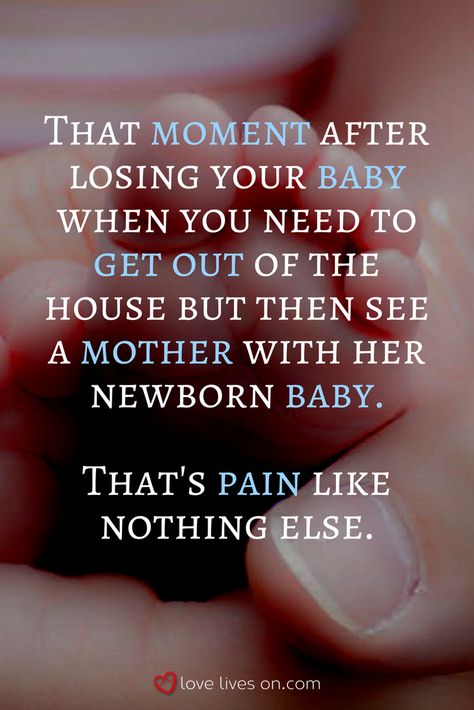 This is common with a missed miscarriage.
This is common with a missed miscarriage.
What does miscarriage tissue vs. a blood clot look like?
It is not always easy to tell the difference between pregnancy loss tissue and a blood clot. Both may look like typical period clots, though it is not uncommon for them to be larger than normal.
Actual pregnancy tissue may not be discernible until after the eighth week. Then, the tissue may look like pink, white, or gray tissue. A person may also be able to see a fluid-filled sac in the passed tissue.
Miscarriage, symptoms - Health Clinic 365 Yekaterinburg
Causes of miscarriage
Questions to the doctor about miscarriage
Diagnosis of miscarriage
Treatment and prevention of miscarriage
According to statistics, 10 to 20% of all pregnancies end in miscarriage. However, the real numbers could be much higher, as a large number of miscarriages happen very early, and women are not even aware of their pregnancy. Most miscarriages happen due to abnormal development of the fetus.
Miscarriage is quite common, but this fact does not make things any easier. It is always difficult to cope with the realization that there was a pregnancy, but no child. Try to deal with the situation psychologically and understand what could be causing the miscarriage, what increases the risk of it, and what type of treatment might be needed.
Miscarriage symptoms .
Most miscarriages occur before 12 weeks. Signs and symptoms of a miscarriage include:
- Vaginal bleeding or spotting (although quite common in early pregnancy)
- Pain or cramps in the abdomen or lower back
- Fluid vaginal discharge or tissue fragments
It is important to consider the fact that in early pregnancy, spotting or vaginal bleeding is quite common. In most cases, women who experience light bleeding during the first three months have an uneventful pregnancy thereafter. In some cases, even with heavy bleeding, the pregnancy does not end in a miscarriage.
Some women who have a miscarriage develop an infection in the uterus. This infection, also called septic miscarriage, can cause:
- Fever (feeling hot, chills)
- Body pains
- Thick, foul-smelling vaginal discharge
When to see a doctor.
Call your doctor if:
- Bleeding, even if only light spotting occurs
- Profuse, liquid vaginal discharge without pain or bleeding
- Isolation of tissue fragments from the vagina
You can put a piece of tissue to be isolated in a clean container and take it to your doctor for examination. It is unlikely that the study will give any accurate results, but if it is determined that the fragments of the excreted tissue are from the placenta, the doctor will be able to conclude that the symptoms that appear are not associated with the presence of a tubal (ectopic) pregnancy.
You can get more detailed information about miscarriage from the gynecologists of the Health 365 clinic in Yekaterinburg.
Prices
Gynecologist, initial appointment
2300 i
Causes and symptoms of miscarriage in early pregnancy
A woman is especially anxious about the news of her own pregnancy. A new life begins to develop inside it, which will soon be born and become the main reason for its existence for the coming years. However early miscarriage is able to cross out unrealizable dreams and postpone successful delivery for an indefinite period. When the expulsion of the fetus occurs before 12 weeks of its development in the womb, every fifth woman does not yet know about the upcoming motherhood. This does not make the process of loss any less emotionally and physically painful. On the other hand, having learned about a failed pregnancy and turning to a doctor, a woman can determine the causes of miscarriage to prevent a similar situation in the future.
Early miscarriage - how does the anomaly proceed
What does science define by the term "miscarriage"? From the point of view of gynecology, this is the process of spontaneous termination of pregnancy up to 22 weeks, when the weight parameters of the embryo do not exceed 0. 5 kg. If a baby developing in the womb weighs 500 grams, then doctors can save him and give a premature baby the opportunity for a happy life. If the weight is less than this indicator, then the struggle for the life of the born baby is meaningless. As mentioned above, early miscarriage is often not felt by a woman. All she notices is a slight delay in the menstrual cycle and increased bleeding during the onset of menstruation, accompanied by severe pain.
5 kg. If a baby developing in the womb weighs 500 grams, then doctors can save him and give a premature baby the opportunity for a happy life. If the weight is less than this indicator, then the struggle for the life of the born baby is meaningless. As mentioned above, early miscarriage is often not felt by a woman. All she notices is a slight delay in the menstrual cycle and increased bleeding during the onset of menstruation, accompanied by severe pain.
Discomfort and painful symptoms can be soothed by taking painkillers and nettle infusion. However, in some cases they are powerless, so going to the doctor is the only right decision in this situation. Analyzing causes of miscarriage , you will surely remember how a copious blood clot came out of you along with menstruation. It was he who became the main symptom of spontaneous expulsion of the fetus by the body.
When a clot breaks, it is important to see a doctor immediately. After the examination, the specialist will tell you if there are any remains of the fetus inside you. In this case, early miscarriage requires cleaning of the uterus to remove traces of embryonic decay from it and prevent subsequent development of infection.
In this case, early miscarriage requires cleaning of the uterus to remove traces of embryonic decay from it and prevent subsequent development of infection.
In case of a miscarriage before 12 weeks, the woman's body seems to give a signal that it is not ready for a full-fledged pregnancy. Or that the parents have health problems that need to be addressed. Consult a doctor to find out the causes of the pathology. The specialist will conduct an examination, prescribe a set of preventive, therapeutic and supportive procedures, after which it will be possible to start talking about pregnancy and childbirth again.
Such different causes of miscarriage – let's get acquainted with provocateurs
Among the most common causes of miscarriage, problems of various etiologies can be noted. Among them:
- Genetic failures - in the presence of a mutating element in the parental chromosomes, the fetus is expelled from the uterus as incapacitated and contrary to the principles of natural selection of the organism.
 Various factors can influence the manifestation and development of pathology, it is not always possible to determine them exactly.
Various factors can influence the manifestation and development of pathology, it is not always possible to determine them exactly. - Hormonal imbalance - the cause of miscarriage may be insufficient production of the hormone progesterone, or the predominance of male hormones in the female body. At the stage of preparation for pregnancy, such an anomaly is easily eliminated by the use of hormone therapy. Such measures help to avoid spontaneous abortion at an early stage.
- Rh-conflict of parents - with a negative Rh factor of the mother's blood, the same indicator of the father plays a very important role. With opposite values early miscarriage is quite possible. If the fetus has a positive Rh factor, then the mother's body seeks to get rid of the foreign body, trying to expel the embryo by any available means. With early diagnosis of an anomaly, the doctor uses progesterone to protect the fetus, which prevents the expulsion of the fetus.
 If both parents are negative for the Rh factor, then the conflict can be avoided.
If both parents are negative for the Rh factor, then the conflict can be avoided. - Infectious diseases are a negative factor that can cause harm to the fetus and the body of the expectant mother of various strengths. In the case of genital infections, it is better to get rid of them before the moment of conception, otherwise infection of the embryo is inevitable. It could become cause of miscarriage early pregnancy . Inflammatory processes in the body of a woman are also taken into account. An increase in temperature in response to the harmful effects of the disease is often accompanied by a general intoxication of the body. This takes away the strength of the fetus, so the body easily gives up the embryo without keeping it in the uterus.
- Abortion is a rather complicated operation in terms of the strength of the subsequent impact on the female body. Unprofessional disposal of the fetus can become the cause of miscarriage in the future, and also lead the woman to a complete loss of reproductive function.
 It is impossible to correct the situation, therefore, doctors, as a rule, communicate for a long time with a woman who has decided to have an abortion in order to convince her to carry out her plans.
It is impossible to correct the situation, therefore, doctors, as a rule, communicate for a long time with a woman who has decided to have an abortion in order to convince her to carry out her plans. - Medicines and medicines - the first trimester of pregnancy is famous for the fact that during this period it is strictly forbidden to take any medicines and drugs. Since vital organs are laid in the embryo, the funds can provoke an anomaly in the development of the child. Also during pregnancy, herbs are prohibited: nettle, tansy, St. John's wort, parsley. Their intake can cause miscarriage and loss of the embryo by the mother's body.
- Mechanical injuries - during pregnancy it is very important to protect yourself from serious physical exertion and possible mechanical damage. From the first days, fitness and other types of physical activity in non-specialized groups are prohibited. In order not to provoke an early miscarriage , it is better to sign up for specialized sports groups for pregnant women, where the load is accurately calculated and only exercises that are harmless to the health of the mother and child are used.
 You can not lift weights, overexert yourself, be subjected to falls, bumps and unsuccessful loads. Even if the mother is full of health and strength, during pregnancy it is better to beware of careless actions.
You can not lift weights, overexert yourself, be subjected to falls, bumps and unsuccessful loads. Even if the mother is full of health and strength, during pregnancy it is better to beware of careless actions. - Other factors - unfavorable environment, harmful working conditions, unbalanced diet.
There are also causes of miscarriage based on stress, depression, nervous mood of the expectant mother. Even at the stage of pregnancy planning, parents should change the usual rhythm of life in order to exclude all negative factors from it. This truth is especially true for women. In order not to provoke an early miscarriage , she must get rid of bad habits, addiction to coffee, alcohol, smoking. She needs to rest more, get enough sleep, eat right and rationally, walk more and breathe fresh air.
Symptoms of a miscarriage - how to determine the termination of pregnancy
The most pronounced signs of spontaneous abortion are pain in the lower abdomen and in the lumbar region, as well as bleeding. Pain symptoms are often spasmodic in nature. They arise suddenly, slowly step aside and after a certain period they roll again. Bloody discharge from the vagina or unstoppable bleeding requires the immediate call of an ambulance team. When observing such signs, there is a high probability of miscarriage in the early stages , so the hospitalization of the expectant mother in such conditions is necessary.
Pain symptoms are often spasmodic in nature. They arise suddenly, slowly step aside and after a certain period they roll again. Bloody discharge from the vagina or unstoppable bleeding requires the immediate call of an ambulance team. When observing such signs, there is a high probability of miscarriage in the early stages , so the hospitalization of the expectant mother in such conditions is necessary.
If we compare abundant bleeding and spotting manifestations, then the latter give more chances for the preservation of the fetus. However, it is not worth delaying the call of the doctor in both cases. The consequences can be very serious. If abundant blood flow is accompanied by the presence of clots and pieces of mucous in the fluid, then this indicates a miscarriage that has already occurred.
Often a possible harbinger of termination of pregnancy is a diagnosis made by an obstetrician-gynecologist, indicating a high tone of the uterus. So that the cause of miscarriage does not provoke it, the future woman in labor is advised to remain calm, not to be nervous, not to overwork.
In general, the presence of many of the symptoms listed above is not a panacea for abortion. With timely treatment of a woman to a doctor, further gestation is possible. The only thing that will have to be faced in this case is the careful care of the attending staff of the gynecological consultation.
Treatment of early miscarriage
Bed rest is the main rule for the normal course of pregnancy when there are threats to it. The doctor, excluding any causes of miscarriage , recommends that the future woman in labor lead a measured and calm lifestyle, take care of herself and her own nerves, eat well and give herself little joys, raising her spirits and tuning in to positive. If the threat of losing the child is strong, then the specialist may completely prohibit getting out of bed once again. In this case, ideal conditions can only be achieved in a hospital, which is why pregnant women with a burdened history are often placed in the prenatal ward for preservation.
Psychologists say that the psycho-emotional background of the expectant mother plays one of the leading roles in the process of preparing for childbirth. In order not to provoke a miscarriage at an early stage and at a later period, a woman needs to think about the good and pleasant. It is useful to read your favorite books, listen to soothing music, breathe measuredly and calmly. To prevent you from having the slightest chance of being upset, your doctor may prescribe valerian or motherwort. For pregnant women, they are absolutely harmless. Expectant mothers are encouraged to think positive. About how the baby will be born, what name the parents will give him, how beautiful and strong he will become as he grows up.
If the causes of miscarriage are more significant, the doctor may prescribe hormonal agents that normalize the general background of pregnancy. Medications with a high content of progesterone, anti-hyperandrogenism drugs and reducing the risk of Rhesus conflict pills may be prescribed.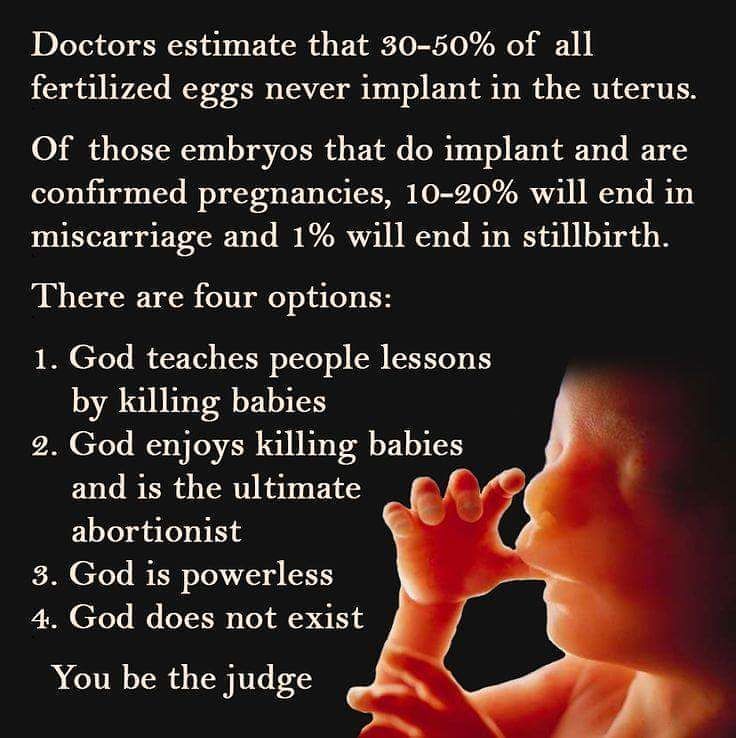 If the threat of miscarriage is high, then cervical closure may be used. The sutures are applied under anesthesia, so the procedure is not painful.
If the threat of miscarriage is high, then cervical closure may be used. The sutures are applied under anesthesia, so the procedure is not painful.
Some women have to be under the strict supervision of specialists for the entire period of pregnancy. It happens when possible early miscarriage and beyond. At the same time, the future woman in labor can be placed in the hospital once, and can also be there on a permanent basis. The reward for strict adherence to the doctor's recommendations is a full-fledged process of pregnancy development and childbirth in due time. A healthy baby who was born can more than compensate for all the inconvenience and discomfort experienced by the parents.
In order to prevent miscarriage, it is recommended that both parents take a balanced approach to the decision to become pregnant. It is necessary to prepare for conception in advance, undergo all the necessary examinations, take the recommended tests. This will eliminate the maximum causes of miscarriage and reduce the risk of developing a negative scenario during pregnancy.












